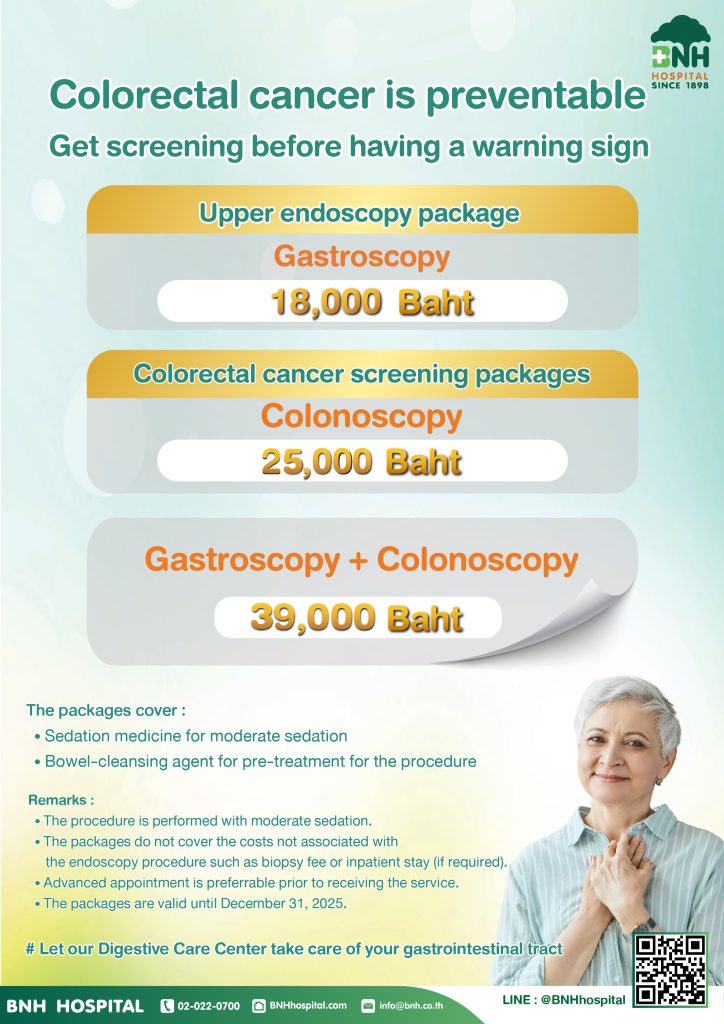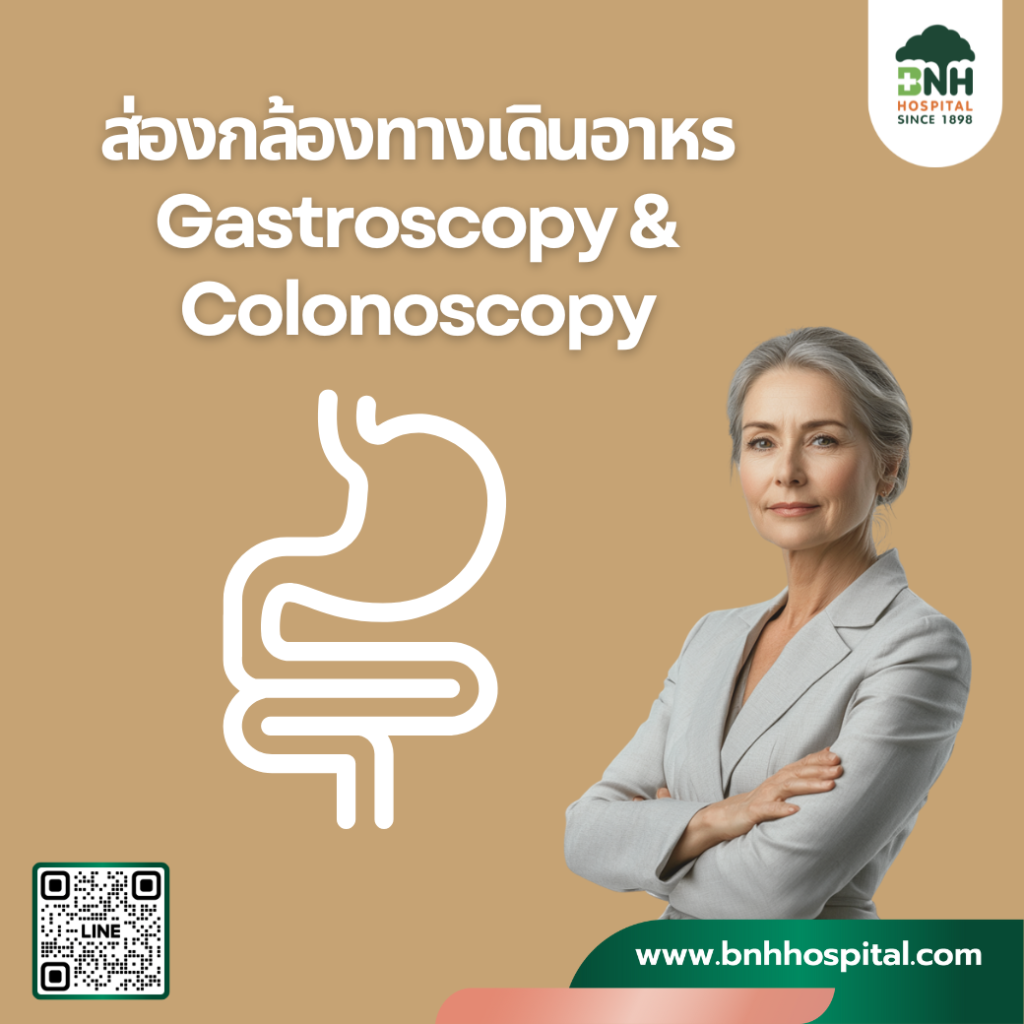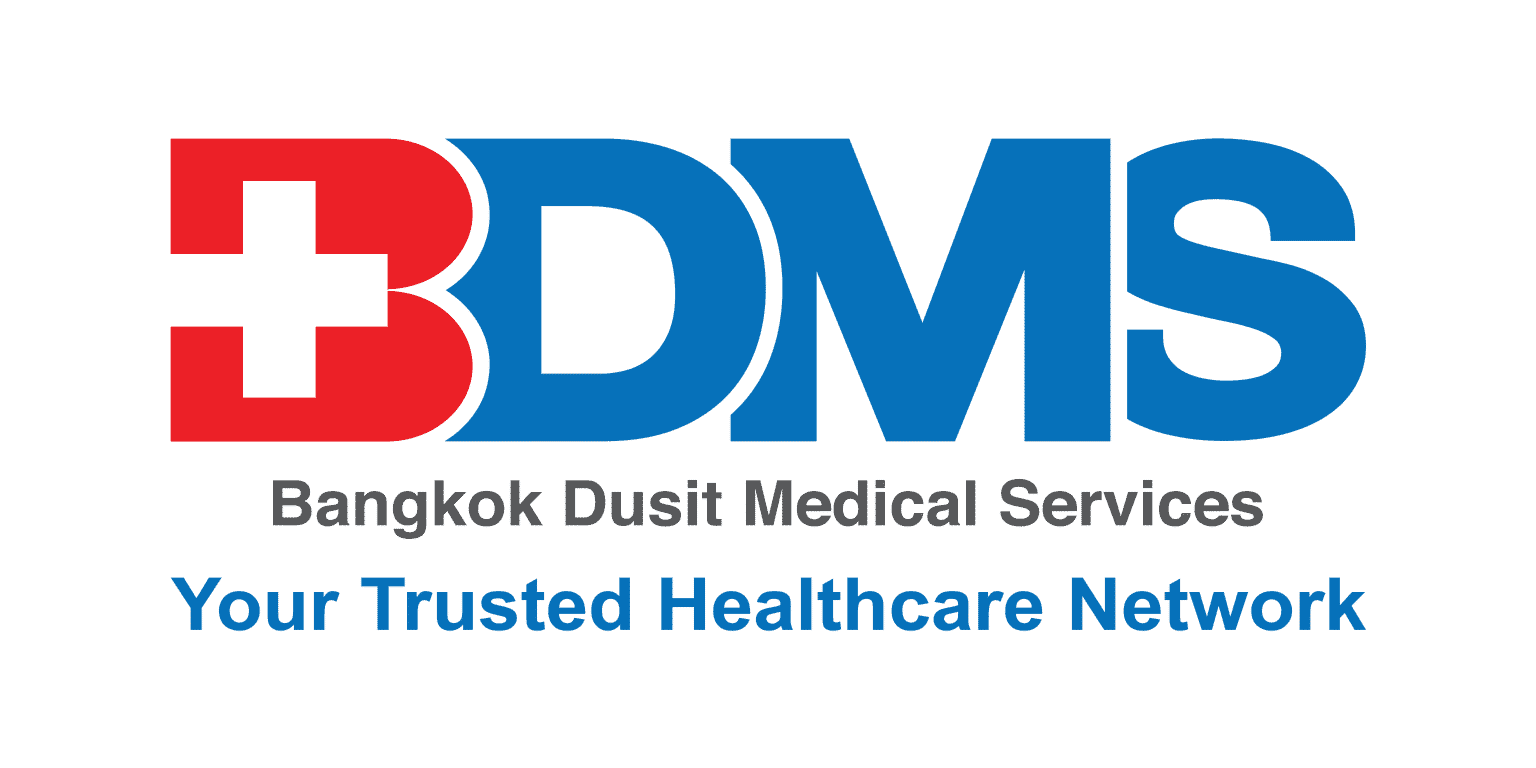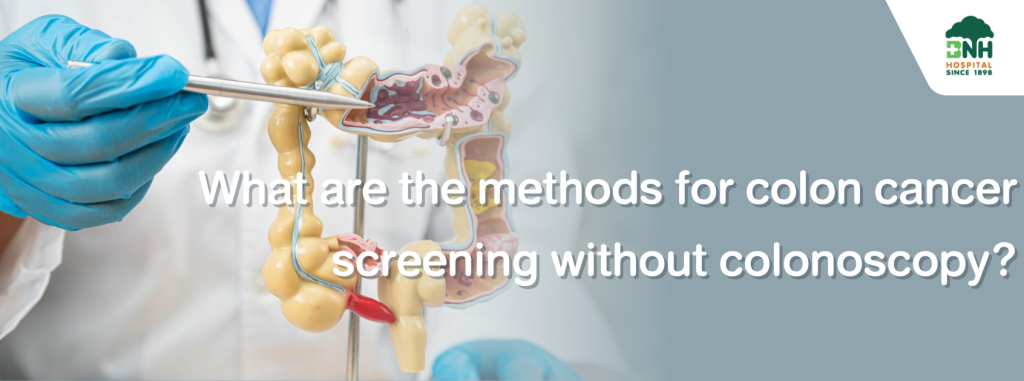
Colon cancer is one of the most common cancers in adults worldwide. Colon cancer screening is important to help prevent colon cancer because colon cancer often forms from adenomatous polyps before they become cancerous. Detecting adenomatous polyps and removing them in the early stages can prevent colon cancer. In addition, if detected early and treated appropriately at the early stages of colon cancer, treatment will be more effective and have a higher chance of survival. There are many methods for colon cancer screening.
When thinking about colon cancer screening, many people think of colonoscopy, which is the insertion of a colonoscope into the rectum. It is the most accurate method that can see directly. And if abnormalities are found, the doctor can cut a piece of tissue for examination. It is a recommended examination method for all patients, especially high-risk groups, such as those with a family history of colon cancer or colon polyps, those who have had colon polyps, or certain types of inflammatory bowel disease. But in risk groups with limitations in colonoscopy, other examination methods can be chosen.
Therefore, in this article, we will talk about how to screen for colon cancer without colonoscopy. There are several ways to do this, with varying levels of accuracy. Let’s take a look at what methods there are and which one is best for you.
Table of Contents
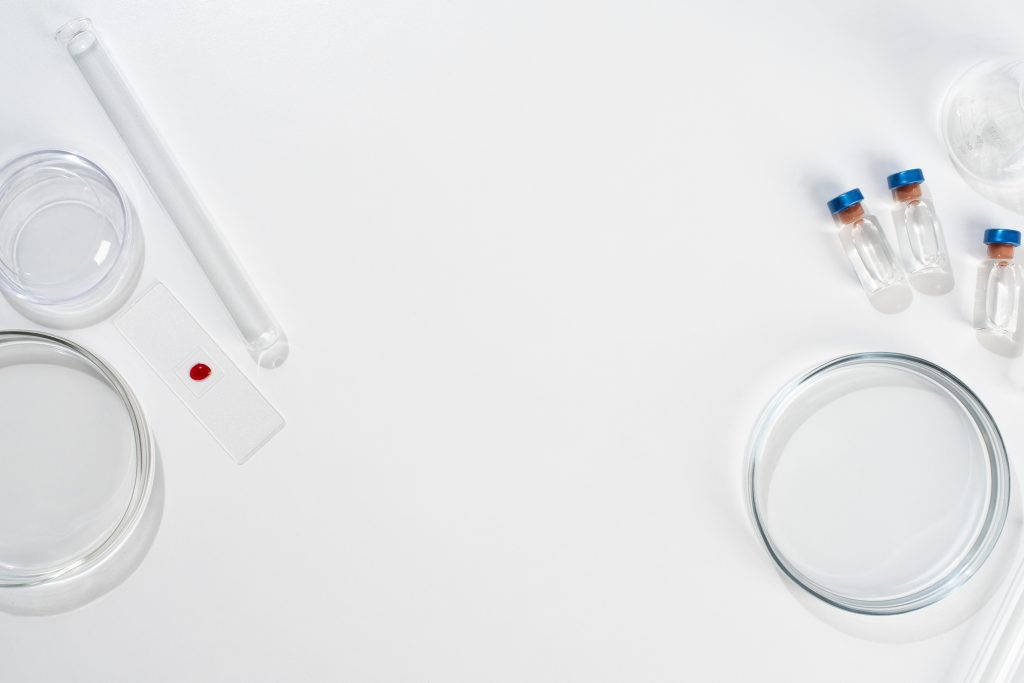
1. Stool DNA methylation for colorectal cancer screening
This is a test for the SDC2 gene from a stool sample of a patient, which is associated with a possible risk of colorectal cancer. The stool sample is extracted for DNA mixed in the sample, and tested with the DNA methylation method to see the Ct value from increasing the amount of DNA.
If the value is found to be in the positive range, it means that the sample has more genes related to colon cancer than the general population. It is recommended to undergo a colonoscopy to confirm and check the stage of the disease.
However, if the value is in the negative range, it means that the risk of colon cancer is no different from the general population. It is recommended to take care of your health and repeat the test every 3 years
One of the more popular screening methods today is the stool DNA Methylation Test, which is a method that can detect abnormalities in DNA associated with early colon cancer.
What is a stool DNA methylation test?
A stool DNA methylation test looks for changes in the genetic material (DNA) that occur in colon cancer cells or cells that are likely to become cancerous. These changes often occur in the form of the addition of methyl groups to the DNA, called DNA methylation. This process can cause abnormal cells to grow and spread more rapidly.
A stool DNA methylation test is a safe and easy-to-do test that can be done at home. A stool sample is collected for laboratory test for DNA abnormalities associated with colon cancer. The test process involves the following steps:
- Stool sample collection: Patients are provided with a stool sample collection kit that can be done at home, with no special preparation required prior to sample collection.
- Sample delivery: The stool sample is delivered to a laboratory for DNA methylation testing.
- DNA analysis: In the laboratory, DNA in the stool sample is extracted and tested for abnormal methylation at sites linked to colon cancer.
- Reporting: The patient will be notified of the results within a specified time frame. If any abnormalities are found, the doctor will provide advice on further testing or treatment.

Advantages of a stool DNA methylation test
- Safe and convenient: This test is a non-invasive test that can be done at home, which is a good option for those who are not comfortable or do not want to undergo a colonoscopy.
- Detects abnormalities in the early stages: DNA methylation testing is more sensitive than fecal occult blood testing in detecting colon cancer and cells at risk of becoming cancerous in the early stages.
- Suitable for screening: It is a method that can be used to screen for colon cancer in the general population or those with moderate risk.
Limitations of fecal DNA methylation testing
- Accuracy: Although the DNA methylation test has high sensitivity, there is still a chance of false positives or false negatives. Therefore, if the test result is positive, additional tests, such as a colonoscopy, are required to confirm the result.
- Cannot detect all small polyps: This test may not be able to detect very small polyps or abnormalities, which may require other methods to be used in conjunction with a more comprehensive screening.
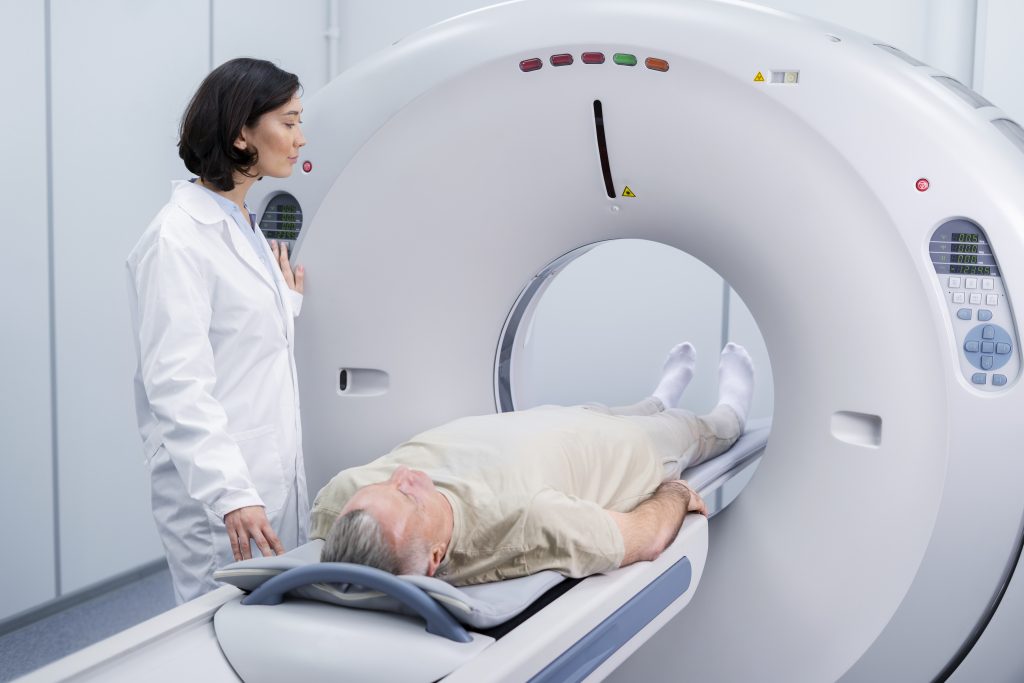
2. CT Colonoscopy or Virtual Colonoscopy
Colonoscopy is usually the standard screening method, but for those who are not comfortable or do not want to undergo a colonoscopy, CT Colonoscopy, also known as Virtual Colonoscopy, is another effective option.
What is CT Colonoscopy?
CT Colonoscopy or Virtual Colonoscopy is a colonoscopy that uses a CT Scan to create three-dimensional images of the colon and rectum. Doctors can use these images to detect abnormalities such as polyps or cancer without actually inserting a colonoscope.
CT Colonoscopy Process
CT Colonoscopy has similar steps to a traditional colonoscopy, but does not require the actual camera to be inserted into the body. The process is as follows:
- Preparation: The patient must cleanse the colon with a laxative before the examination to flush out waste and feces from the colon, allowing the examination to be clearer. Sometimes, a special contrast solution may be needed to make the colon more visible in the CT Scan image.
- Examination Procedure: The patient lies on the back on the examination bed. A small tube is then inserted into the rectum to inject air or water into the colon, allowing the colon to expand and the images to be clearer. The CT scans the colon and creates a three-dimensional image of the colon. These images show the internal structure of the colon and any abnormalities that may be present.
- Result analysis: The doctor will analyse the images from the CT scan to see if there are any abnormalities, such as polyps or signs of colon cancer. If any abnormalities are found, further testing, such as a colonoscopy, may be needed to remove the tumor or treat it.
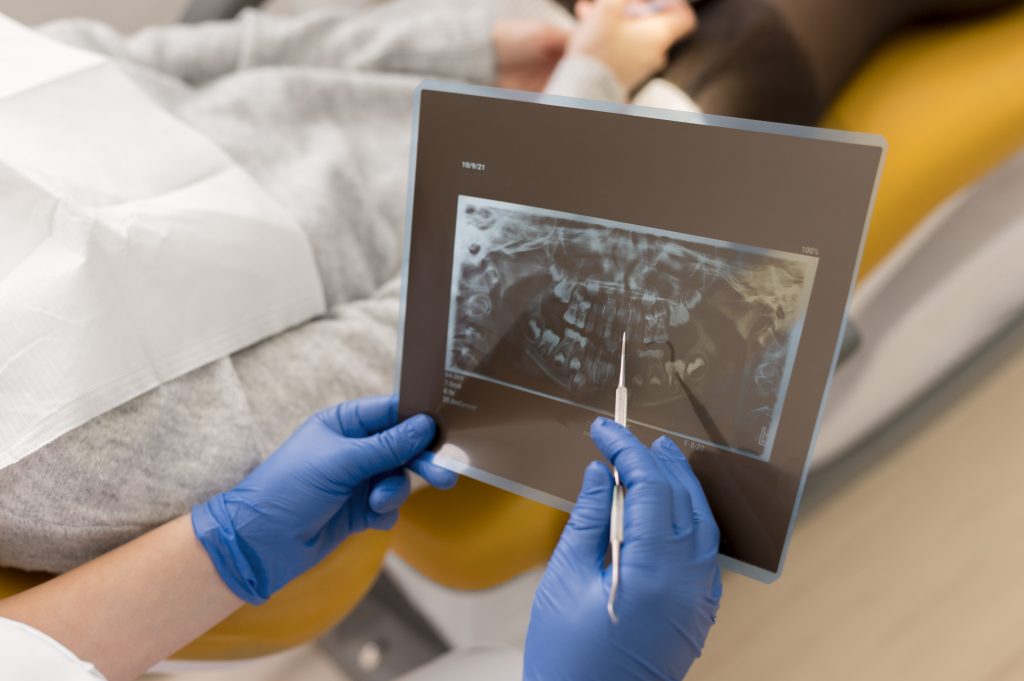
Advantages of CT Colonoscopy
- No risk: CT Colonoscopy does not require the insertion of a camera into the body, making it more comfortable for the patient and less risky than a traditional colonoscopy.
- Fast and convenient: The examination process takes less time and allows the patient to return to normal activities sooner.
- Clear images: CT scans create clear, three-dimensional images of the colon, allowing the doctor to detect abnormalities more accurately.
- Accurate: The accuracy of CT Colonoscopy for detecting polyps measuring 10 mm or larger is comparable to that of a colonoscopy.
Limitations of CT Colonoscopy
- Cannot provide immediate treatment: If abnormalities, such as polyps, are found, the doctor cannot remove them or treat them at this stage. A traditional colonoscopy is required for further investigation.
- Complicated preparation: Although the test is non-invasive, the camera must be inserted into the body to reduce the risk of harm and complications, but the patient still needs to cleanse the colon with laxatives, which may not be comfortable for some people.
- Lower detection rate than colonoscopy: CT Colonoscopy may be less accurate than colonoscopy in detecting small polyps or cancers, especially in areas that are difficult to see.
Who is CT Colonoscopy suitable for?
CT Colonoscopy is a good option for people at moderate risk of colon cancer and are unable or unwilling to undergo a routine colonoscopy, such as those with underlying medical conditions that make colonoscopy a high risk or those who have had a bad experience with a colonoscopy.
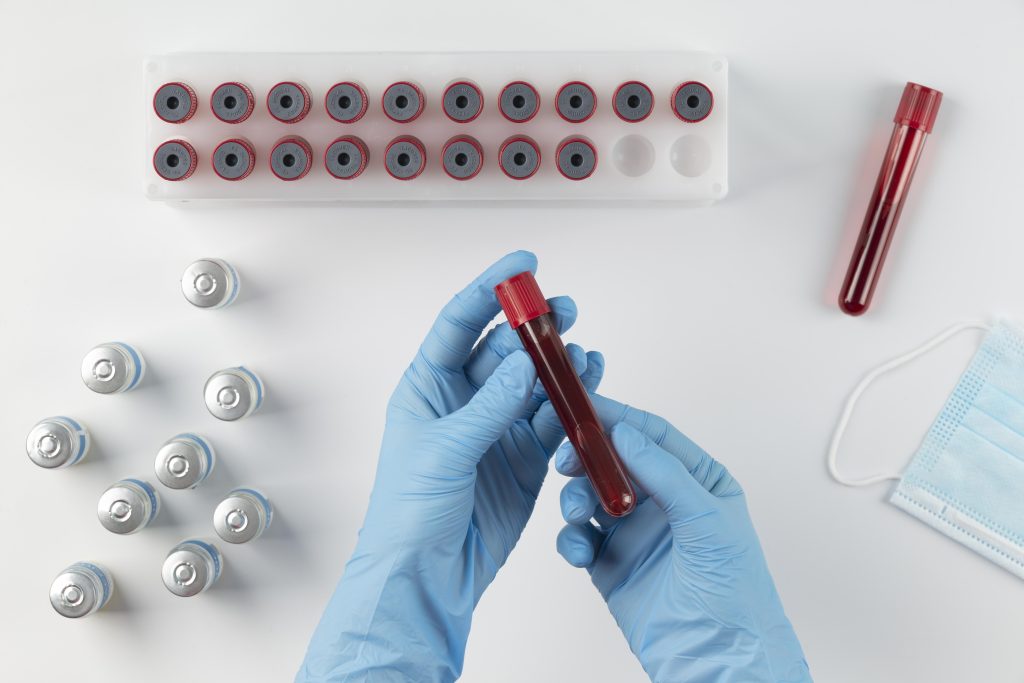
3. Colon cancer screening by blood CEA test
One of the methods that doctors use to screen and monitor colon cancer is to test the Carcinoembryonic Antigen (CEA), a substance that can be found in the blood of patients with colon cancer.
What is CEA?
- CEA (Carcinoembryonic Antigen) is a protein found in embryonic tissue during development. The CEA value in normal people is between 2.5 and 5. However, in some cases, such as those with cancer, especially colon cancer, the CEA value may increase significantly. This method of colon cancer screening is not recommended because it is found that approximately 40% of colon cancer patients have low CEA values. This method of screening may cause colon cancer patients to miss the opportunity to detect and receive treatment at an early stage, making treatment more difficult and less effective.
The CEA test is done by drawing blood and measuring the CEA level in the plasma. This test is often used in the following cases:
- Follow-up after cancer treatment: After surgery or other treatments such as radiation or chemotherapy, a CEA test will help doctors know if the cancer is still present. Or has the cancer recurred?
- Evaluation of treatment effectiveness: A decrease in CEA after treatment indicates that the treatment is effective. However, if the CEA remains high, it may indicate that the cancer is still present or is not responding to treatment.
- Screening for cancer spread: A rapidly increasing CEA level may indicate that the cancer has spread to other parts of the body, such as the liver or lungs.
Accuracy and limitations of the CEA test
Although the CEA test is useful in monitoring and screening for colon cancer, it does have some limitations.
- CEA is not a specific test: High CEA levels may be found in people with other non-cancer diseases, such as inflammatory bowel disease, hepatitis, or smoking. Therefore, the CEA test cannot be used alone to diagnose colon cancer.
- Normal CEA levels do not mean no cancer: Some colon cancer patients may have normal CEA levels. Therefore, a normal CEA level does not mean that the patient does not have cancer.
- Monitoring rather than screening: The CEA test is often used to monitor cancer after treatment or in cases where cancer is suspected to have recurred, rather than as a screening test for cancer in the general population.
When to get a CEA test?
A CEA test is often used as part of a follow-up after colon cancer treatment, especially in the first 3 to 5 years after treatment, when the cancer is at the highest risk of returning. However, this test should only be done on the advice of your doctor. You should not self-test or make treatment decisions based on the results of a CEA test.
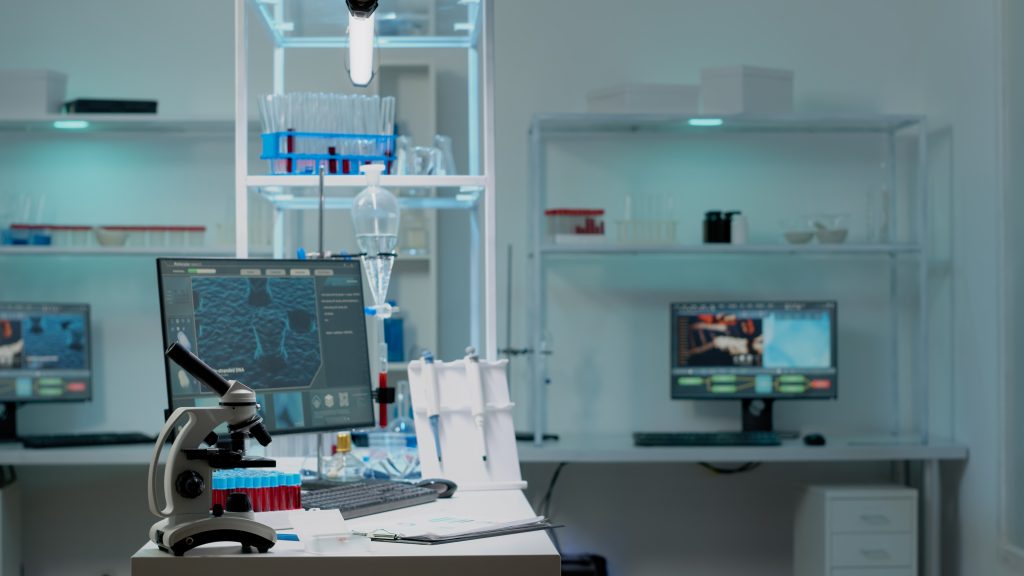
4. Stool occult blood test
The stool occult blood test (FOBT) is a screening method for colon cancer, as well as a test for causes of gastrointestinal bleeding that are invisible to the naked eye. The word “occult” means “hidden.” In this test, a chemical method is used to detect blood that may be mixed in the stool but cannot be seen with the naked eye.
What is a stool occult blood test?
A stool occult blood test is a test for the amount of blood that may be hidden in the stool. The presence of blood in the stool can indicate the presence of ulcers or diseases in various parts of the digestive tract, which can be caused by a number of factors, including stomach ulcers, colon polyps, or even colon cancer.
Types of Stool Occult Blood Test
There are many types of stool occult blood tests, but the most popular are:
- Guaiac-Based Fecal Occult Blood Test (gFOBT): Uses a chemical called “Guaiac” to test for blood. This method requires stool samples from the patient for three consecutive days to increase the chance of detecting blood.
- Fecal Immunochemical Test (FIT): Uses antibodies to detect blood proteins present in the stool. This method is more sensitive and accurate than gFOBT and does not require fasting or medication prior to the test.
Stool Occult Blood Test Procedure
The Stool Occult Blood Test is simple and painless. The steps are as follows:
- Stool Sample Collection
• The patient will receive a stool sample collection kit from the doctor. This kit contains clean and sterile equipment for collecting samples.
•T he stool sample will be collected in a prepared container and sent back to the laboratory for analysis. - Laboratory Analysis
• In the laboratory, the stool sample will be tested using chemicals or antibodies to detect any hidden blood.
• The test results will be sent back to the patient’s physician for analysis and evaluation.

Importance of Stool Occult Blood Test
The Stool Occult Blood Test is a very useful tool for screening for colorectal cancer. Especially in high-risk groups, such as those aged 50 and over or those with a family history of colon cancer.
- Early detection: Early-stage colon cancer often has no obvious symptoms. The Stool Occult Blood Test can help detect cancer at an early stage, increasing the chances of treatment and recovery.
- Detects other abnormalities: In addition to colon cancer, blood in the stool can also indicate other health problems, such as inflammatory bowel disease, stomach ulcers, or intestinal polyps.
Limitations of the Stool Occult Blood Test
Although the Stool Occult Blood Test is important, there are some limitations to consider.
- Cannot identify the cause of the bleeding: Blood in the stool cannot be determined where the blood is coming from in the digestive tract. Therefore, if blood is found in the stool, the doctor may recommend additional tests, such as a colonoscopy, to find the exact cause.
- False negative and false positive results: This test can have false negative or false positive results, which means that blood is not found in the stool if cancer is present, or blood is found in the stool without actual cancer.
Summary
The 4 methods mentioned above are colon cancer screening methods that do not require colonoscopy. They are suitable for those who are afraid of colonoscopy or are not ready to be screened using this method. However, it must be admitted that the most accurate method for detecting colon cancer out of all the methods is colonoscopy, which can detect and treat it in one step. This examination is very important for those who are at high risk, such as those with a family history of colon cancer or those aged 45-50 years and above.
However, those who have a history of their immediate family members (parents, siblings) suffering from colon cancer should check their history to see at what age their immediate family members who have the disease began to suffer. Then subtract 10 from that age to get the age at which you should start screening for colon cancer. However, if the age minus 10 is more than 40 years, start screening at age 40. For example, Mr. A has a father who has colon cancer at age 40. Therefore, the age at which Mr. A should start screening for colon cancer is 45-10 = 35 years. Or Mr. B has a mother who has colon cancer at age 70. 70-10 = 60, which is more than 40. Therefore, the age at which Mr. B should start screening for colon cancer is 40 years.
However, choosing the right screening method should be done by consulting a doctor to assess the risk and specific needs of each individual. Regular screening is the key to preventing and treating colon cancer from the beginning.

Article by
Dr. Saranrat Toeywatanachai, MD.
Digestive Care Centre, BNH Hospital
Doctor’s Schedule
| Day | Time | Location |
|---|---|---|
| Monday | 08:00 – 19:00 | Digestive Care Centre |
| Tuesday | 08:00 – 17:00 | Digestive Care Centre |
| Wednesday | 10:00 – 18:00 | Digestive Care Centre |
| Friday | 08:00 – 16:00 | Digestive Care Centre |
| Sunday | 08:00 – 16:00 | Digestive Care Centre |
Contact us or make an appointment with our staff via LINE @MBRACE.
Gastroscopy & Colonoscopy Package
Another dangerous cancer that often appears without warning signs is colorectal cancer.
” Don’t be complacent! Colon cancer can be cured if detected at an early stage. “
Gastroscopy 18,000 THB
Include
- Doctor’s fee for gastroscopy
- Endoscopy room fee
- Preparation room fee
- Laxative medication fee
- Anesthesia fee (sedation)
- Medical equipment and instrument fee
- Hospital service fee
Colonoscopy 25,000THB
Include
- Doctor’s fee for colonoscopy
- Endoscopy room fee
- Bowel preparation room fee
- Laxative medication fee for bowel preparation
- Anesthesia fee (sedation)
- Medical equipment and instrument fee
- Hospital service fee
- Recovery room fee
Gastroscopy + Colonoscopy 39,000THB
- Doctor’s fee for gastroscopy
- Doctor’s fee for colonoscopy
- Endoscopy room fee
- Bowel preparation room fee
- Laxative medication fee for bowel preparation
- Anesthesia fee (sedation)
- Medical equipment and instrument fee
- Hospital service fee
- Recovery room fee
- Please make an appointment in advance.
- This price includes doctor fees and hospital service fees.
- This package includes an anaesthesia for the endoscopy (moderate sedation).
- This package does not include a general anaesthesia fee conducted by an anaesthesiologist, if required.
- This package does not include additional fees other than for the endoscopy itself, such as additional biopsy tests, room and board in the case of inpatient stay (admission), and medication and treatment of other illnesses.
Service Location: Digestive Care Centre, 3rd Floor, Zone B, BNH Hospital
Operating Hours: Monday–Sunday, 8:00 AM–5:00 PM.


